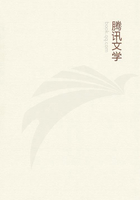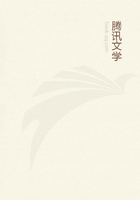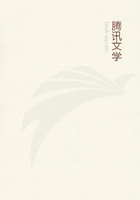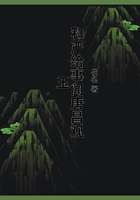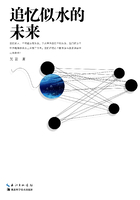The custom was widespread in Europe, but seems to have flourished especially in England, France, and among the South Slavs; at least the fullest accounts of the custom come from these quarters. That the Yule log was only the winter counterpart of the midsummer bonfire, kindled within doors instead of in the open air on account of the cold and inclement weather of the season, was pointed out long ago by our English antiquary John Brand; and the view is supported by the many quaint superstitions attaching to the Yule log, superstitions which have no apparent connexion with Christianity but carry their heathen origin plainly stamped upon them. But while the two solstitial celebrations were both festivals of fire, the necessity or desirability of holding the winter celebration within doors lent it the character of a private or domestic festivity, which contrasts strongly with the publicity of the summer celebration, at which the people gathered on some open space or conspicuous height, kindled a huge bonfire in common, and danced and made merry round it together.
Down to about the middle of the nineteenth century the old rite of the Yule log was kept up in some parts of Central Germany. Thus in the valleys of the Sieg and Lahn the Yule log, a heavy block of oak, was fitted into the floor of the hearth, where, though it glowed under the fire, it was hardly reduced to ashes within a year. When the new log was laid next year, the remains of the old one were ground to powder and strewed over the fields during the Twelve Nights, which was supposed to promote the growth of the crops. In some villages of Westphalia, the practice was to withdraw the Yule log (Christbrand) from the fire so soon as it was slightly charred; it was then kept carefully to be replaced on the fire whenever a thunderstorm broke, because the people believed that lightning would not strike a house in which the Yule log was smouldering. In other villages of Westphalia the old custom was to tie up the Yule log in the last sheaf cut at harvest.
In several provinces of France, and particularly in Provence, the custom of the Yule log or tréfoir, as it was called in many places, was long observed. A French writer of the seventeenth century denounces as superstitious the belief that a log called the tréfoir or Christmas brand, which you put on the fire for the first time on Christmas Eve and continue to put on the fire for a little while every day till Twelfth Night, can, if kept under the bed, protect the house for a whole year from fire and thunder; that it can prevent the inmates from having chilblains on their heels in winter; that it can cure the cattle of many maladies; that if a piece of it be steeped in the water which cows drink it helps them to calve; and lastly that if the ashes of the log be strewn on the fields it can save the wheat from mildew.
In some parts of Flanders and France the remains of the Yule log were regularly kept in the house under a bed as a protection against thunder and lightning; in Berry, when thunder was heard, a member of the family used to take a piece of the log and throw it on the fire, which was believed to avert the lightning. Again, in Perigord, the charcoal and ashes are carefully collected and kept for healing swollen glands; the part of the trunk which has not been burnt in the fire is used by ploughmen to make the wedge for their plough, because they allege that it causes the seeds to thrive better; and the women keep pieces of it till Twelfth Night for the sake of their chickens.
Some people imagine that they will have as many chickens as there are sparks that fly out of the brands of the log when they shake them; and others place the extinct brands under the bed to drive away vermin. In various parts of France the charred log is thought to guard the house against sorcery as well as against lightning.
In England the customs and beliefs concerning the Yule log used to be similar. On the night of Christmas Eve, says the antiquary John Brand, our ancestors were wont to light up candles of an uncommon size, called Christmas Candles, and lay a log of wood upon the fire, called a Yule-clog or Christmas-block, to illuminate the house, and, as it were, to turn night into day. The old custom was to light the Yule log with a fragment of its predecessor, which had been kept throughout the year for the purpose; where it was so kept, the fiend could do no mischief. The remains of the log were also supposed to guard the house against fire and lightning.
To this day the ritual of bringing in the Yule log is observed with much solemnity among the Southern Slavs, especially the Serbians. The log is usually a block of oak, but sometimes of olive or beech. They seem to think that they will have as many calves, lambs, pigs, and kids as they strike sparks out of the burning log. Some people carry a piece of the log out to the fields to protect them against hail. In Albania down to recent years it was a common custom to burn a Yule log at Christmas, and the ashes of the fire were scattered on the fields to make them fertile. The Huzuls, a Slavonic people of the Carpathians, kindle fire by the friction of wood on Christmas Eve (Old Style, the fifth of January) and keep it burning till Twelfth Night.
It is remarkable how common the belief appears to have been that the remains of the Yule log, if kept throughout the year, had power to protect the house against fire and especially against lightning. As the Yule log was frequently of oak, it seems possible that this belief may be a relic of the old Aryan creed which associated the oak-tree with the god of thunder. Whether the curative and fertilising virtues ascribed to the ashes of the Yule log, which are supposed to heal cattle as well as men, to enable cows to calve, and to promote the fruitfulness of the earth, may not be derived from the same ancient source, is a question which deserves to be considered.
8. The Need-fire

